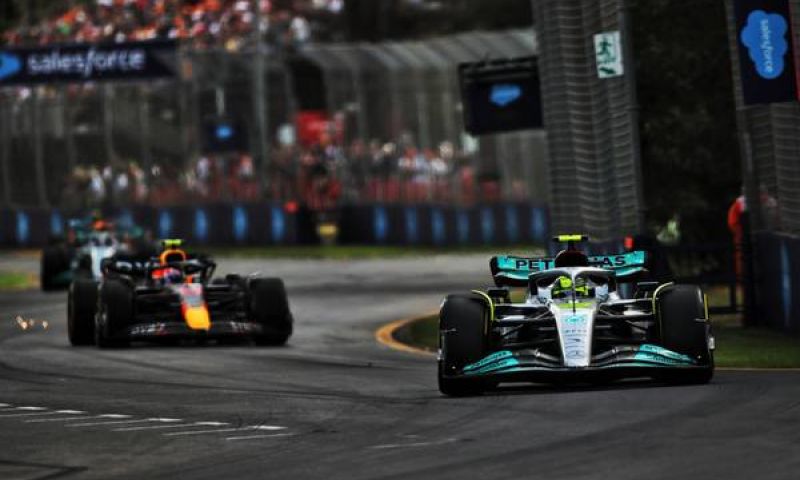Column

Development analysis | Mercedes performance reduces in Australia
The new rules and regulations for the 2022 Formula 1 season mean the development rate will be extremely high. As teams record more and more data in Grand Prix weekends, they get to grips with their car and will be making tweaks that actually have big outcomes compared to recent seasons when all gains had been discovered. As much as a race on the track, the engineers are in a race to find as much time as possible in the factory.
Mercedes problems
Mercedes have been struggling with porpoising ever since winter testing and it doesn't look like they've solved it. Drivers Lewis Hamilton and George Russell continue to insist during interviews that a solution is on the way with everyone at the factory working hard to fix it. A popular theory inside the paddock is that the Mercedes car itself is quick, but they just need to unlock the potential by solving the bouncing problem.
Mercedes were one of only two teams to arrive in Melbourne without any upgrades on their car. Of course, some of the data could be circuit specific. The races in Bahrain, Saudi Arabia and Australia have all taken place on circuits with completely different characteristics though some similarities and general trends can be identified.
Despite some actually pleasing results, Mercedes have been dropping further behind their rivals on pure pace. In qualifying, the gap to the pole position time grows and grows. This suggests Mercedes aren't actually improving and are actually dropping backwards compared to what Ferrari and Red Bull Racing are managing to do at the front of the grid.
| Qualifying | Best Mercedes driver | % of pole | Difference (%) |
| Bahrain | Lewis Hamilton (P5) | 100.751 | N/A |
| Saudi Arabia | George Russell (P6) | 101.025 | +0.274 |
| Australia | Lewis Hamilton (P5) | 101.229 | +0.204 |
Better results, remarkably
Quite astonishingly, Mercedes secured P5 and P6 on the grid in Melbourne. This came with an ounce of luck. Fernando Alonso should've been ahead of them but crashed whilst on a flying lap due to a car issue. Carlos Sainz should've been ahead of them but a red flag ruined his fastest lap, and had an issue inside the garage later on Q3. Daniel Ricciardo and Esteban Ocon were only around one-tenth shy of Russell: a result that really could've gone either way. But after all, you've got to be there to create your own luck.
With even more astonishment, Mercedes finished P3 and P4 to take home more points from the Australian Grand Prix than any other constructor. A little bit more luck with Sainz and Max Verstappen retired. But whilst Mercedes are down on performance, they're ticking all the correct boxes in reliability. Something that Red Bull have been unable to do so far in 2022.
There's more astonishment still to come. Russell is Leclerc's closest rival in terms of points in the World Championship, with Hamilton ahead of Verstappen. For all of the talk that Mercedes have built a poor car whilst Red Bull have a rocket, the points don't really show for it. The current World Championship standings don't reflect performance, but they do reflect reliability.
Red Bull Racing team boss Christian Horner said: "I'd rather fix a fast car, than make a reliable slow car fast," in a conversation with Sky Sports. But maybe he wants to review that when looking at the World Championship standings. Even more so if the following popular paddock theory becomes true: that the Mercedes car itself is quick, but they just need to unlock the potential by solving the bouncing problem.
What do Red Bull and Ferrari need to improve on?
With the steep development curve and now an off week before a European Grand Prix, Red Bull Racing need to work on a number of areas. The top priority is reliability. Though with little clarification or confidence, Horner cited Verstappen's retirement as a possible fuel related problem which would be similar to what was experienced in Bahrain.
Ferrari need to improve on straight-line speed. The Italian team lost most of their time to Red Bull in the high-speed sector two which was revamped for the 2022 edition. To highlight a trend, sector two in Melbourne can be directly compared with most of the Saudi Arabia track where Perez secured pole position and Verstappen won the race. There are some high-speed circuits to come.
To close the gap on Ferrari, Red Bull need to improve on the slow-medium speed corners. In qualifying, Verstappen was actually ahead of Leclerc going into the final two/three corners on the circuit with a delta of 0.142 seconds. But Leclerc pulled it back to get pole position by almost three tenths.
At turn 12 in his quickest qualifying lap, Verstappen engaged a minimum 33% of throttle whereas Leclerc only dropped to 59% proving the Ferrari car still has better traction through these slow-medium speed corners. Leclerc is able to have much more confidence in this section and it proved to be a crucial swing in the lap time. This difference could also indicate that the Ferrari is able to manage its tyres better when you get to the end of the lap.